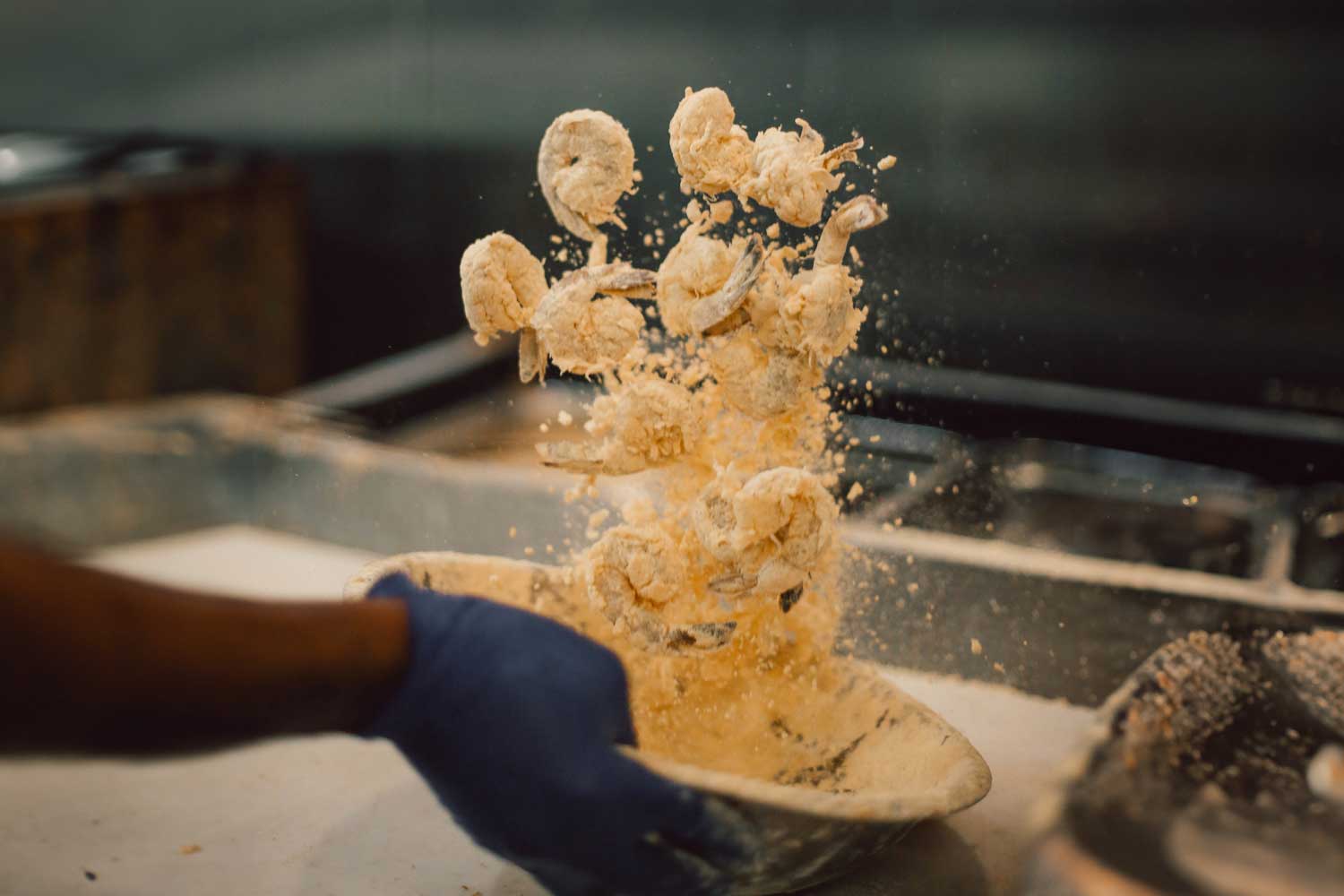The late great Ella Brennan, long-time matriarch of the New Orleans restaurant scene as head of the Brennan clan— and the perennial owner/operator of Commander’s Palace, the much-celebrated bastion of fine dining in the Garden District— once said of peanut butter and jelly sandwiches, “You know why kids love peanut butter and jelly sandwiches? Because peanut butter and jelly sandwiches are good.” I wholeheartedly agree with that sentiment.
Though I feel the same about fried shrimp. Granted, fried shrimp aren’t considered as much of a kid food as peanut butter and jelly sandwiches, but that particular seafood entrée was a substantial component of my youth.
When I was a kid, my family didn’t eat out much. In the 1960s and 1970s, most families didn’t dine out a lot around here. In addition to the cultural habits of the era, there weren’t many dining options in Hattiesburg, Mississippi in those days.
However, on certain special occasions we would have dinner in a local restaurant. My go-to eatery was a casual seafood restaurant called Captain John’s. My must-order every time I ate there was fried shrimp. I couldn’t even tell you if there were any other items on the menu. It wouldn’t have mattered. I was going to order, and eat, fried shrimp.
There are certainly more “sophisticated” ways to cook shrimp, and I like many of those variations, though I’m certain that none of them are better— and more satisfying to me— than the fried variety.
I have been blessed to grow up 70 miles north of one of the most fertile areas for seafood in the world— the Gulf of Mexico and the Mississippi Sound. The crab, oysters, and fish are plentiful, and I love all of those. But it’s the shrimp that holds the fondest place in my heart. At one time, around the turn of the previous century, Biloxi was considered the seafood capital of the world. In those days they were harvesting almost five million pounds of Gulf shrimp and unloading them at one of the 12 canneries just off the beach. There is a museum dedicated to the Mississippi Gulf Coast seafood industry in Point Cadet by the bridge in Biloxi, and it is a must-visit for anyone who loves seafood and Coastal heritage.
In the 1970s we had a small fish camp just off the Pascagoula River. We fished, crabbed, swam, and water skied during the day, and cooked our catch most nights. Some nights we’d camp out and set out trot lines and on very special occasions we would go out to eat at Baricev’s in Biloxi or the Tiki Room in Gautier.
We never fried shrimp at the camp. I’m not sure why, because we fried fish often. Some days we purchased shrimp right off the shrimp boats as they were coming back into port. But those shrimp were always taken home and boiled.
There are two primary ways to fry shrimp— using breading or batter. I am not a fan of batter-fried shrimp. It works when eating Asian food, but if not done properly, I find that a batter— tempura or otherwise— often captures the oil and seals it inside between the batter and the shrimp. I bread my shrimp and I always use straight corn flour with creole seasoning added to the mix.
Most fried items in a restaurant go through the breading process of seasoned flour, then dipped in egg wash, and then dredged into breadcrumbs or another run through the seasoned flour. When frying shrimp, I go from egg wash to seasoned corn flour and then straight into the hot oil. They come out much lighter— and less greasy— that way.
Some people use cornmeal or a mixture of cornmeal and white flour or cornmeal and corn flour. To my tastes cornmeal doesn’t work with shrimp. With fried oysters cornmeal is a must, and oyster breading should be at least 80% corn meal, but straight seasoned corn flour is the way to go with fried shrimp to make sure the end result is light and doesn’t overpower the flavor of the shrimp.
Some people have a hard time finding corn flour in the grocery store. At our restaurants we purchase corn flour in 25-pound sacks. There are several popular off-the-shelves “fish fry” products that contain corn flour (check the ingredient listing). There are a couple of big brand names that are almost 100% corn flour, which means that company is just purchasing truckloads of corn flour and portioning it into boxes for retail sale. If you can’t find corn flour in bulk, just grab a box of one of those commercial fish frys and add creole seasoning to it.
There are several options when it comes to fried shrimp. We’ve already covered the breaded or battered. The other main option has to do with the favored condiment— tartar sauce or cocktail sauce? I come down on the side of cocktail sauce. I have nothing against tartar sauce, but when I was a kid, I just ate ketchup with my fried shrimp, so I guess the preference for cocktail has grown from that.
I have a friend in Houston who uses vanilla ice cream instead of egg wash when breading his shrimp. I’ve never tried it, mainly because it seems like it would be too sweet. I would imagine that practice started at someone’s fish camp as a necessity-is-the-mother-of-invention move and the refrigerator was filled with beer, with no room for milk or eggs. Someone probably commented, “Just melt that two-year old pint of freezer burned Blue Bell up in the freezer. It’s made with milk, isn’t it? That should work.” I guess after enough beer, maybe one can’t taste the vanilla and sugar.
There is also a crude method of spreading mustard on a piece of fish before breading it. I always suspected that came from the same fish camp necessity move— no milk or eggs, but hey, we’ve got mustard.
There are many foods I ate as a child that I no longer eat. But I still eat fried shrimp, and often. You already know why… because fried shrimp are good.
Onward.




